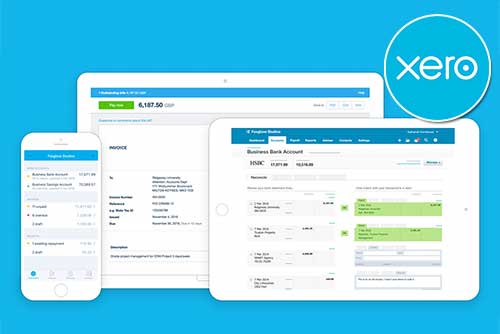Mastering Net Profit: Calculation, Importance, and Improvement Strategies
Net profit is an important metric in business, guiding enterprises towards financial success. Understanding its calculation, recognising its significance, and implementing strategies to enhance it are pivotal endeavours for any business leader.
In this article, we’ll explain what net profit is, explore its calculation method, discuss its significance, and outline strategies for improving it.
What is Net Profit?
Net profit, also known as the bottom line, is a key financial metric that represents the amount of money a company has left over after deducting all expenses from its total revenue within a specific period.
It is essentially the profit that remains once all costs, including operating expenses, taxes, interest, and depreciation, have been subtracted from the company’s total revenue.
Why is Net Profit Important?
Net profit provides insights into how effectively a company is managing its revenue generation and expenses. It reflects the company’s ability to turn sales into profits and indicates the efficiency of its operations.
The net profit metric influences strategic decision-making processes within a company. It guides decisions related to pricing strategies, cost-cutting measures, investment priorities, and resource allocation.
Investors and shareholders closely monitor a company’s net profit as it reflects its profitability and potential returns on investment. Consistent or growing net profits instil confidence among investors and may attract additional investment.
The Net Profit Formula
Net profit is commonly calculated as:
Net Profit = Total Revenue − Total Expenses
Where:
- Total Revenue: This includes all income generated by the business from its primary activities, such as sales of goods or services. It’s the total amount of money earned before any deductions.
- Total Expenses: These are all costs incurred by the business in its operations. Expenses include costs such as rent, utilities, salaries, raw materials, marketing expenses, taxes, interest payments, depreciation, and any other costs necessary for running the business.
A healthy net profit is indicative of a company’s ability to efficiently manage its resources and generate sustainable profits from its operations. It reflects positive financial performance, showing that the company’s revenues exceed its expenses, allowing for reinvestment, expansion, or distribution of dividends to shareholders.
An Example of How to Calculate Net Profit
E-Shop generated £500,000 in total sales revenue last year. After accounting for all expenses including production costs, salaries, rent, utilities, marketing, taxes, interest, and depreciation, totaling £420,000, the company’s net profit amounted to £80,000.
This indicates that after covering all expenses, E-Shop retained £80,000 as profit.
What is Net Profit Margin?
Net profit margin shows the percentage of revenue that translates into profit after accounting for all expenses. To calculate net profit margin, net profit is divided by total revenue and multiplied by 100 to express the result as a percentage.
Net profit margin formula:
Net Profit Margin (%) = (Net Profit/Total Revenue) x 100
A higher net profit margin indicates that a company is more efficient at generating profit from its revenue, while a lower margin may suggest higher expenses relative to revenue or weak pricing strategies.
Strategies to Improve Net Profit
Enhancing net profit requires a comprehensive approach that addresses both revenue generation and cost management. Here are some strategies that businesses can employ to improve their net profit:
Cost Reduction Strategies
Efficient cost management is essential for improving net profit margins. Operational efficiency improvements involve streamlining workflows, automating repetitive tasks, and optimising resource allocation to reduce waste.
Outsourcing non-core functions to third-party providers can lower costs and allow businesses to focus on core activities. Negotiating supplier contracts for better terms, such as volume discounts or extended payment terms, can also significantly lower costs.
Pricing Optimisation Strategies
Businesses can leverage value-based pricing strategies to align product prices with the perceived value to customers, enabling them to justify higher prices and increase profit margins. By employing dynamic pricing strategies, which are based on real-time market data and demand fluctuations, businesses can adjust prices dynamically to optimise revenue.
Bundling and packaging complementary products or services at discounted prices can incentivise customers to make larger purchases, driving up average transaction value and overall revenue.
Revenue Growth Strategies
By understanding the needs and preferences of new customer segments, businesses can capitalise on fresh opportunities for growth. For example, product diversification enables companies to broaden their offerings and appeal to a wider customer base. Introducing new products or services that complement existing offerings can attract new customers and increase revenue streams.
Furthermore, upselling and cross-selling techniques can encourage customers to purchase additional items or upgrades, boosting average transaction value and profitability.
Common Mistakes to Avoid When Calculating Net Profit
Several common mistakes can occur when calculating net profit, potentially leading to inaccurate financial assessments and misguided decision-making.
Here are some of the most common mistakes to avoid:
Misclassifying Expenses
Misclassifying expenses can also skew the calculation of net profit. For instance, capital expenditures should not be treated as operating expenses and deducted from revenue to calculate net profit. Such misclassification can distort the financial picture and lead to erroneous conclusions regarding the company’s profitability.
Ignoring Non-Cash Expenses
Non-cash expenses, such as depreciation and amortisation, are often overlooked or misunderstood in net profit calculations. While these expenses do not involve actual cash outflows, they represent the allocation of costs over the useful life of assets.
Failing to account for non-cash expenses can result in an understatement of total expenses and an overestimation of net profit.
Neglecting Accrual Basis Accounting
Neglecting accrual basis accounting principles can lead to inaccuracies in net profit calculations. Accrual accounting requires recognising revenue and expenses when they are incurred, regardless of when cash transactions occur.
Failing to adhere to accrual-based accounting can distort the timing of revenue and expense recognition, affecting the accuracy of net profit figures.
Confusing Gross Profit with Net Profit
One common mistake when calculating net profit is confusing it with gross profit. Gross profit represents the amount of revenue left over after deducting the cost of goods sold from total revenue. It provides insight into a company’s core business operations and its ability to generate revenue while covering direct production costs.
On the other hand, net profit refers to the residual profit remaining after deducting all expenses, including operating expenses, taxes, interest, and depreciation, from total revenue.
Unlike gross profit, net profit accounts for all expenses associated with running the business, providing a more comprehensive view of its overall profitability and financial health.
The Power of Understanding and Improving Net Profit
Net profit is a gauge of a company’s performance, providing a comprehensive snapshot of its financial viability. Anchored within the income statement, net income encapsulates the balance between revenue and expenses, delineating the efficiency of operations and the potential for sustainable growth.
By scrutinising net profit alongside its components, businesses gain invaluable insights into their operational effectiveness, guiding strategic decisions and fostering a path toward enhanced profitability and long-term success.





















